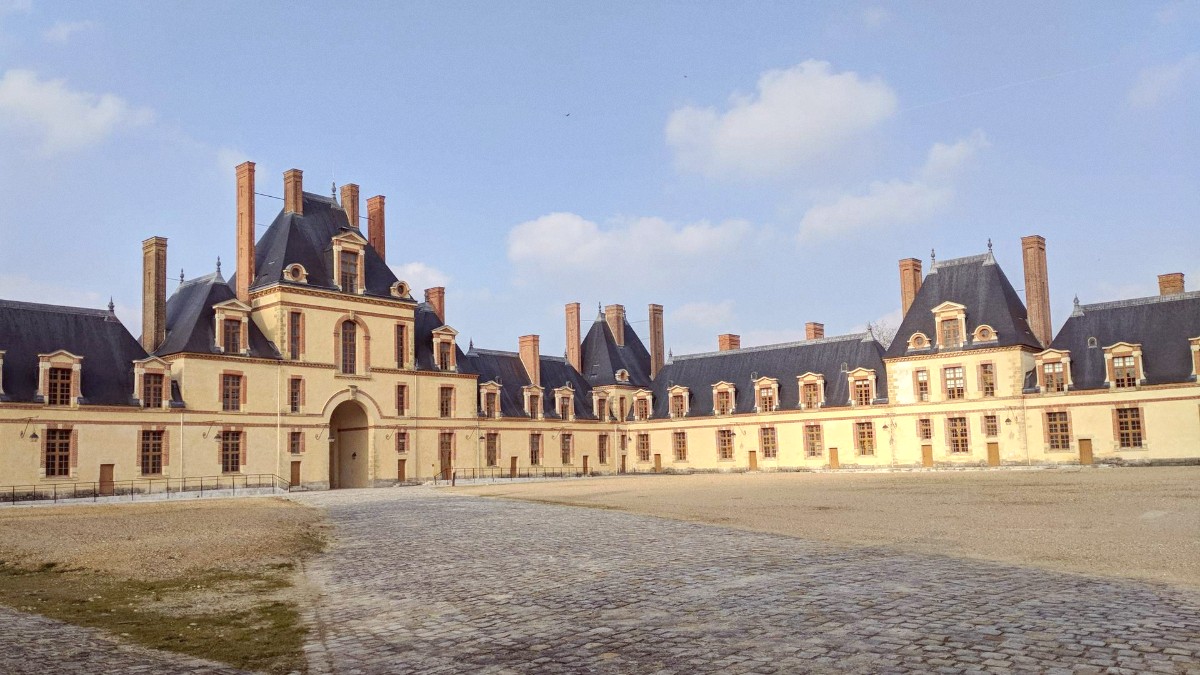
France
Fontainebleau experiences a temperate climate with distinct seasons. Each period creates a different feel for the town and the surrounding forest.
Spring (April-May): Temperatures are mild, averaging 10-18°C (50-64°F). This period brings moderate rainfall, maintaining the forest lush and green. Flowers bloom in the château gardens, presenting a colorful display. The air feels fresh, outdoor activities are comfortable.
Summer (June-August): Days are warm, sometimes hot, with averages between 18-26°C (64-79°F). Temperatures occasionally reach above 30°C (86°F). Summer has lower overall precipitation than spring, though thunderstorms can occur. Humidity remains moderate. Long daylight hours contribute to extended exploration.
Autumn (September-October): Cool temperatures characterize this season, with averages between 10-18°C (50-64°F). Moderate rainfall returns, especially later in the season.
Winter (November-March): This season brings cold temperatures, averaging 2-8°C (36-46°F). The chance of rain or light snow increases, and frost is common, notably in the forest. Days are shorter, and the atmosphere becomes quieter.
Your travel goals influence optimal visit timing.
Château visit: The shoulder seasons (April-May, September-October) create fewer crowds and pleasant temperatures, comfortable exploration of the palace and its gardens.
Forest activities (hiking, bouldering, cycling): Spring and autumn have the most comfortable temperatures for these pursuits, with fewer insects. Summer is also popular but can be very hot for strenuous activity.
Gardens: Spring (April-May) is optimal for seeing the gardens in full bloom. Early autumn also has pleasant strolls through colorful landscapes.
June - August
Warmest weather, all attractions operate fully, long daylight.
Most crowded, peak accommodation prices, potential for very hot days.
April-May, Sep-Oct
Pleasant temperatures, fewer crowds, better prices, beautiful scenery.
Some attractions may reduce hours, higher chance of cooler/wetter weather.
November - March
Fewest crowds, lowest accommodation prices, unique winter atmosphere.
Cold weather, shorter daylight, some outdoor activities limited.
Fontainebleau experiences a temperate climate with distinct seasons. Extreme temperatures, like below -5°C or above 35°C, are rare but possible during severe winter cold snaps or summer heatwaves. Check forecasts closer to your travel dates for the most accurate information.
For forest activities like hiking, bouldering, and cycling, spring and autumn have the most comfortable temperatures and fewer insects. Summer is also popular but can be very hot for strenuous activity.
Shoulder seasons (April-May, Sep-Oct) for fewer crowds and pleasant weather.
Spring and autumn for ideal temperatures and conditions.
Spring (April-May) to see the gardens in full bloom.
Low season (Nov-Mar) offers the lowest accommodation prices.
Winter offers the fewest crowds at attractions.
Prices vary widely based on your travel style and preferences.
The currency used in France is the Euro (€). ATMs are widely available. Credit and debit cards (Visa and Mastercard) are accepted in most establishments. Inform your bank of your travel plans to avoid card transaction issues.
These ranges give a general idea of various expenses.
France offers high-quality healthcare. Fontainebleau is a very safe town with low crime rates. Petty crime like pickpocketing is rare but can occur in crowded areas.
These estimates provide a general idea of daily expenses and item costs.
The currency in France is the Euro (€). ATMs are widely available, and major credit cards are accepted. Fewer exchange offices exist in smaller towns, with major cities offering more options.
Inform your bank of your travel plans to avoid card transaction issues while abroad. Check for international transaction fees with your bank.
Daily costs for a budget traveler average €50-€80, including hostel dorms, supermarket food, and public transport. Focus on free attractions like the forest.
Cost-effective accommodation and dining choices.
Limited options for luxury experiences or frequent paid tours.
Daily costs for a mid-range traveler are €100-€200, including comfortable 3-star hotels, casual dining, and activity rentals.
Balance of comfort, convenience, and exploration.
May not cover extensive fine dining or private transfers.
Daily costs for a luxury traveler are €250+, covering 4-5 star hotels, fine dining, private transfers, and exclusive experiences.
Full comfort, convenience, and bespoke experiences.
Highest financial outlay compared to other styles.
| Item | Category | Price Range (€) |
|---|---|---|
| Hostel Dorm (per night) | Accommodation | 25-40 |
| Mid-range Dinner (per person) | Meals | 20-40 |
| Train from Paris (one-way) | Transportation | 10-15 |
France maintains a robust healthcare system, and Fontainebleau is a safe destination.
No specific vaccinations are required for entry to France. Ensure routine vaccinations are current. Consult a healthcare professional for personalized advice.
Tap water in Fontainebleau is safe for consumption. Restaurants adhere to strict hygiene standards. Practice good food hygiene.
Use Sunscreen and stay hydrated, especially during summer. Wear a hat and Sunglasses. Seek shade during hottest parts of the day.
Ticks are present in Fontainebleau Forest.
When hiking, wear long sleeves and pants, especially in grassy or wooded areas. Check for ticks on your skin and clothing after outdoor activities. Remove any ticks promptly and correctly.
Forest fires present a minor risk during very dry summer periods. Follow local guidelines regarding fire safety, especially when in the forest.
Always prioritize your safety when exploring natural areas.
Connects to police, ambulance, fire services across Europe.
Direct access to medical emergency services.
For police assistance or crime reporting.
Fontainebleau is a very safe town with low crime rates. Petty crime, like pickpocketing, is rare but can occur in crowded tourist areas or on trains to and from Paris. Exercise general caution, especially with valuables.
Travel insurance is highly recommended for all travelers. A comprehensive policy offers coverage for medical emergencies, emergency evacuation, trip interruption, and baggage loss.
Explore World Nomads for adventurous travelers, SafetyWing for digital nomads, or Insubuy for US visitors.
Keep copies of your important documents (passport, visa, insurance policy) separate from the originals. Store digital copies on your phone and a cloud service.
Notify your bank of your travel dates to prevent card freezes or transaction issues during your trip.